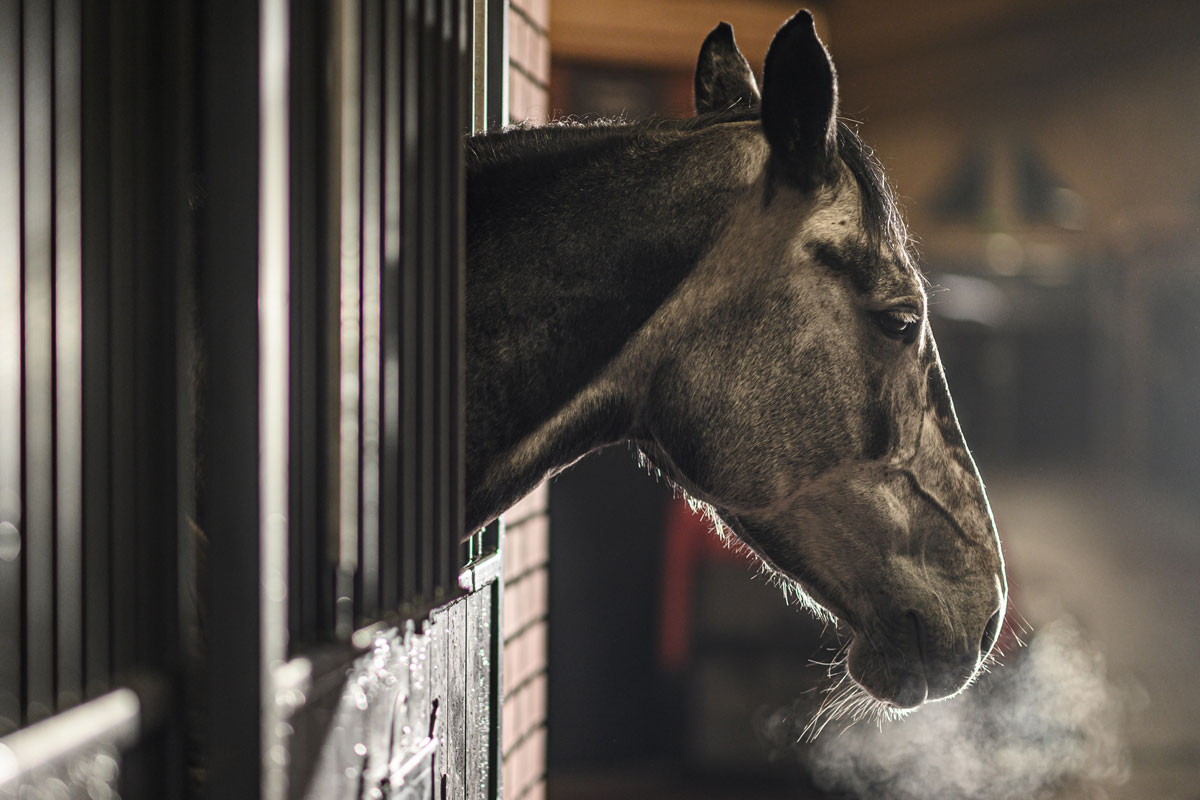
07 May 2020 From hoof to head: senior horse care basics
Proof of their resiliency is evident in barrel racing arenas, in the dressage rings, and along endurance trails confirming the adage that age is just a number for many.
Indeed, our healthy horses grow older, move slower, and sometimes struggle in their golden years. While all parts of a horse’s makeup encounter change over time, the respiratory, dental, immune, digestive, and musculoskeletal systems require more active management by veterinarians and horse owners.
Second, to lameness, chronic respiratory problems most often ail older horses. Recurrent Airway Obstruction (RAO), commonly known as heaves due to a line along the ribs’ bottom, affects twelve to twenty percent of adult horses. Similar to asthma in human beings, allergic triggers in a horse’s environment exacerbate the condition. RAO affects both genders with an onset most frequently beginning between ages nine and twelve.
RAO does not discriminate between stalled horses fed hay or those living on pasture during the summer months, but in both cases, managing the horse’s environment is central to addressing reactive flare-ups and heightened inflammation of the respiratory airway.
RAO symptoms may present mildly at first, but if the condition is left, untreated they become more dangerous and, in some cases, life-threatening. The most common warning signs are straightforward for horse owners like us to identify and include:
- A chronic cough both at rest and during exercise
- Nasal discharge
- Shortness of breath at rest often with wheezing or nostril-flaring
- Exercise intolerance
- A ‘heave’ line along with the abdominal muscle
Symptoms of a more advanced condition include unexplained weight loss or a fever if bacterial pneumonia is present. Diagnostic tests such as an upper airway and tracheal endoscopy, lung function testing, and white blood cell counts complement a clinical exam of the horse and evaluate its medical history to confirm an RAO diagnosis.
No quick fix exists to treat RAO. While a veterinarian may recommend corticosteroids or the use of a rapidly acting bronchodilator, environmental and dietary management rather than medication is central to a horse’s comfort over the long-term.
Triggers for either an RAO episode or contributing factors in a horse’s ongoing discomfort exist in the stall and the pasture. When limited turnout is possible during winter months, exposure to mold, dust, and endotoxins in hay or bedding can spark an RAO attack. Conversely, horses living in a pasture 24/7 in summer may be better off inside a barn occasionally.
Reducing exposure to irritants in your horse’s feed and the environment is a priority, whether boarding in a stall or pasture. Consider the following options and think about which might most reflect your horse’s situation:
- Remove dust, mold, and other irritants in bedding. Consider bedding alternatives like straw or sawdust-like wood chips, rubber matting, or recycled newspaper.
- A well-ventilated stall keeps the fresh air moving. Maximum ventilation may be as simple as moving your horse near an exterior door.
- Stall cleaning kicks up dust. Reduce your horse’s exposure to allergens during stall cleaning by turning it outside during chores
- If hay or grain dust or allergens are the cause of your horse’s discomfort, wet, steam, or dampen your forage, switch to pelleted feed, or add an Omega-3 fatty acid supplement to combat inflammatory conditions.
A lifelong condition like RAO deserves your lifelong commitment. The choices you make in the barn and the field influences your horse’s prognosis, and with a little adjustment, your horse will be breathing easily once more.

